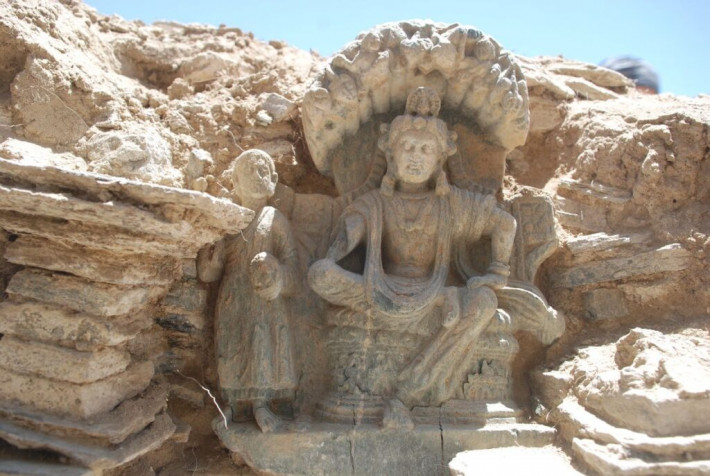On November 10, in Kabul, an eminent Afghan archaeologist gave us some excellent news, disavowing what we read in the mainstream press in the West.
Having been involved for a decade in the excavations at Mes Aynak, where an archaeological site on the surface is complicating the opening of a huge copper mine, this expert knows what he’s talking about and today he is pleased to be able to announce that the dossier has reached an extremely favorable conclusion.
The richness of its subsoil makes Mes Aynak (literally “little mine”), 35 km south of Kabul, the second largest copper deposit in the world. At a time when China and the other BRICS countries need this precious metal for their industrial development, exploitation of the mine could provide a substantial windfall that Afghanistan, a country devastated by 40 years of war and looting, urgently needs to finance its reconstruction.
In 2008, an initial contract was signed between the Afghan government and the Chinese state-owned company Metallurgical Corp of China (MCC). However, following security incidents, the project was suspended.
Taking advantage of the opportunity, archaeologists, who suspected the site’s archaeological wealth, were able to excavate the site and uncover a vast Buddhist complex (3rd-7th century), already considered a major Buddhist site. The site includes monasteries, stupas (temples), fortresses, administrative buildings, dwellings, sculptures and frescoes.
It’s true that the 2008 contract envisaged conserving only a small part of the site and transforming the rest into an open-pit mine.
However, according to our interlocutor, who attended the latest discussions between all the various parties involved in the project at the end of October, things have changed radically: the Chinese company MCC now agrees to mine the whole site, not just a small part, exclusively by the use of underground mining methods. As a result, not a small part but all of the historic remains on the surface will be preserved.
Whereas in 2001, the world was shocked by the destruction of the two giant Buddhas in the Bamiyan Valley, this happy agreement marks a real turning point. Both Afghanistan and China take their responsibility in the defense of the cultural heritage of mankind, while confirming their commitment to bring prosperity to all through economic and industrial development.
In Kabul, Karel Vereycken











